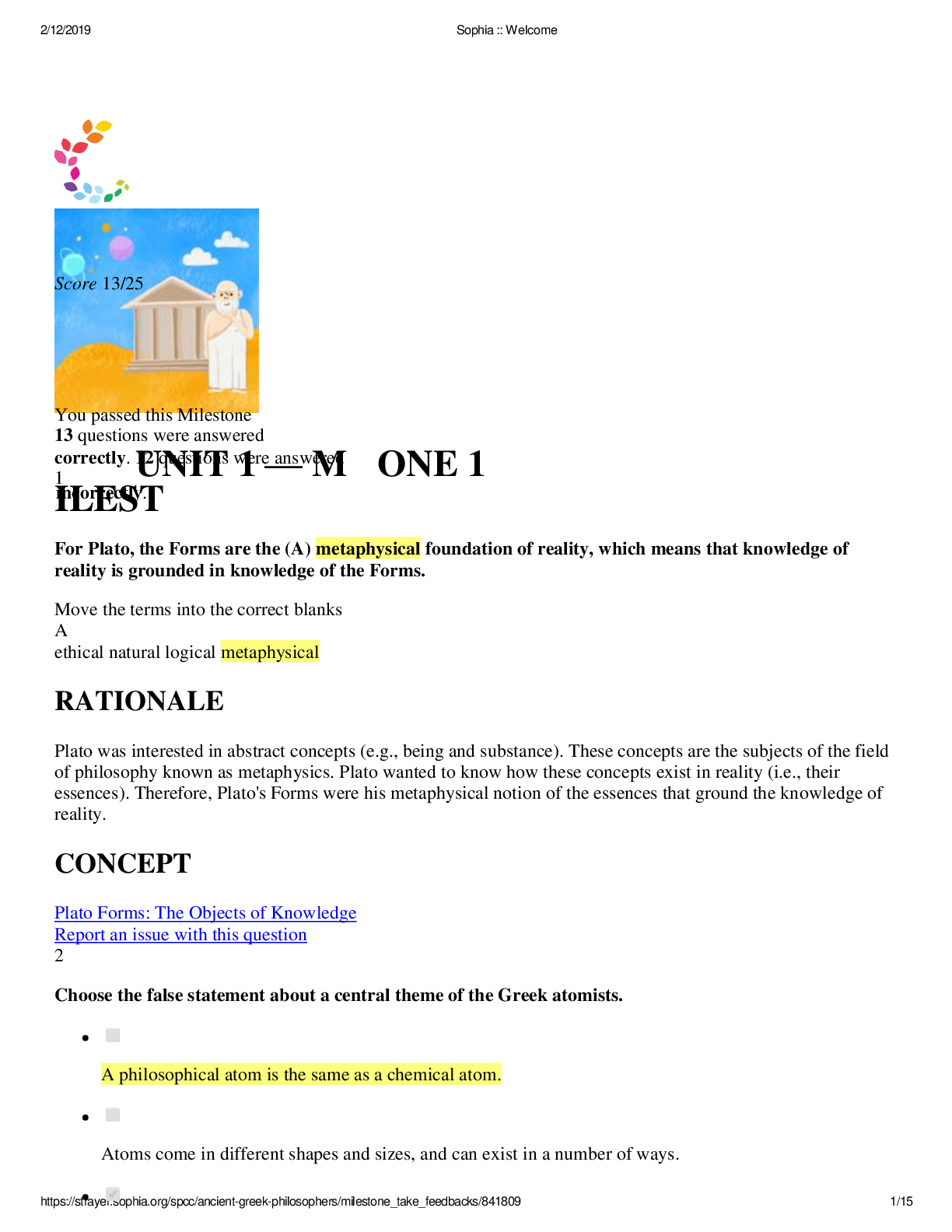Business > QUESTIONS & ANSWERS > BUSINESS 243 NEURO TEST WITH COMPLETE SOLUTIONS GRADED A (All)
BUSINESS 243 NEURO TEST WITH COMPLETE SOLUTIONS GRADED A
Document Content and Description Below
BUSINESS 243 NEURO TEST WITH COMPLETE SOLUTIONS GRADED A Question 1 of 29 1.0 Points A 25 year old male is admitted to the ICU for observation with a closed head injury following a motorcycle a... ccident. Upon arrival the patient has a GCS of 14. When assessing this patient, you notice ecchymosis over the mastoid bone. What other sign is consistent with this type of injury? A. Ottohrea B. Brudzinski's sign C. Negative CT scan D. Contralateral motor weakness Question 2 of 29 1.0 Points Secondary brain injury is most commonly a result of A. ischemia B. coup - contracoup type injuries C. transient loss of consciousness D. diffuse axonal injury Question 3 of 29 1.0 Points The earliest symptom indicating an increase in intracranial pressure is A. an alteration in LOC B. ipsilateral pupil dilation C. a focal motor deficit D. nausea and vomiting Question 4 of 29 1.0 Points You are administering a Nicardipine drip for your patient. You have 25mg in 250ml of NS. Your pump is infusing at 50 ml/hr. How much Nicardipine is being delivered? A. 0.5 mg/hr B. 5 mg/hr C. 0.1 mg/hr D. 10 mg/hr Question 5 of 29 1.0 Points The normal value for ICP is considered to be: A. >15 mm Hg B. 0 - 15 mm Hg C. 60 - 80 cm H2O D. < 50 cm H2O Question 6 of 29 1.0 Points Given an ICP of 28 mmHg and an blood pressure of 136/74, the calculated cerebral perfusion pressure (CPP) would be: A. 66 mmHg B. 72 mmHg C. 83 mmHg D. 62 mmHg Question 7 of 29 1.0 Points Which of the following is the MOST COMMON reason for a subarachnoid hemorrhage? A. cerebral artery disease B. cerebral aneurysm leak C. chronic hypertension D. blunt head trauma Question 8 of 29 1.0 Points Your patient is 6 hours post admission following blunt head injury in which it was reported that he sustained a loss of consciousness for 10 minutes followed by a return of consciousness at which time he was oriented x3. When you assess him, he now arouses only to pain with groaning and grimacing. Which of the following injuries would you suspect? A. basal skull fracture B. epidural hematoma C. concussion D. subdural hematoma Question 9 of 29 1.0 Points Which of the following is an example of compensation for cerebral swelling according to the Monroe-Kellie Hypothesis A. Shifting of cerebral tissue to the opposite hemisphere B. Reflexive hyperventilation to increase oxygenation C. Redistribution of CSF to the spinal cord D. Vasodilation of blood flow to the area of cerebral injury Question 10 of 29 1.0 Points Hypotension will ultimately result in A. decreased perfusion of cerebral tissue B. increased cerebral blood flow C. increased perfusion pressure across the blood-brain barrier D. decreased CO2 production Question 11 of 29 1.0 Points The neurosurgeon is setting up to insert an intraventricular monitoring catheter. You know that he will need to access it through the A. cervical cistern B. sub-arachnoid space C. non-dominant lateral ventricle D. Aqueduct of Sylvius Question 12 of 29 1.0 Points Which of the following findings on your neurological exam denotes the most serious prognosis? A. decerebrate posturing B. GCS score of 14 C. hemiparesis D. confused speech Question 13 of 29 1.0 Points Which of the following medications is prescribed to decrease cerebral vasospasm? A. Nimodipine (Nimotop) B. Vecuronium (Norcuron) C. Phenytoin (Dilantin) D. Phenobarbital Question 14 of 29 1.0 Points Your patient’s ICP is being monitored and you note that the pressure has been in excess of 20 for the last 20 minutes. As an independent nursing action you would immediately A. decrease the ventilator rate B. lower the head of the bed so the patient is supine C. decrease noxious stimuli D. administer mannitol as a precaution Question 15 of 29 1.0 Points On your 2 hour neuro check, you note that one of your patient’s pupils has dilated. You realize that this is an indication that A. meningeal irritation is occurring from a subarachnoid hemorrhage B. global brain ischemia has occurred from traumatic brain injury C. the patient is retaining CO2 due to hyperventilation D. herniation may be occurring with impingement on the ipsilateral 3rd cranial nerve Question 16 of 29 1.0 Points The most important consideration in reducing secondary brain injury is by preventing A. hyperkalemia and hypothermia B. hypervolemia and hyperthermia C. hypotension and hypoxia D. hypertension and hypothermia Question 17 of 29 1.0 Points You would most likely expect to provide seizure precautions for your patient with a(n) A. concussion B. sub-arachnoid hemorrhage C. epidural bleed D. basal skull fracture Question 18 of 29 1.0 Points Nuchal rigidity occurs as a result of A. hydrocephalus B. meningeal irritation C. ischemic stroke D. herniation of the brain stem Question 19 of 29 2.0 Points Bilaterally constricted pupils may be the result of (select all that apply): A.opiate usage B.pontine damage C.cocaine overdose D.anisocoria E.ischemic brain damage Question 20 of 29 2.0 Points Your patient has sustained a mild subdural hematoma and has been admitted to the Neuro ICU for observation. Neuro checks are ordered for every hour X 8. The rationale for this is to (pick all that apply): A.trend for Glascow Coma Score B.assure positive spinal reflexes C.detect for signs of meningeal irritation D.assess for CSF drainage E.assess for signs and symptoms of increasing intracranial pressure Question 21 of 29 2.0 Points When assessing your patient with traumatic brain injury, you would recognize Cushing’s Triad when (select all that apply)? A.you notice an increase in the pulse deficit B.the GCS drops from 12 to 10 C.the pulse pressure widens D.the heart rate drops from 82 to 56 bpm E.the blood pressure drops to 90/60 Question 22 of 29 2.0 Points What are the 3 “H’s” of Triple H Therapy (check all that apply)? A.hypervolemia B.hyperthermia ?? C.hemodilution D.hypertension ?? E.hypoglycemia Question 23 of 29 2.0 Points Which of the following medications might be utilized for a patient with increased intracranial pressure secondary to trauma (select all that apply)? A.levetiracetam B.mannitol C.nimodipine D.sodium bicarbonate E.metoprolol Question 24 of 29 2.0 Points Your patient is on a ventilator following acute head injury. The ICP is going above the physician’s desired range and hyperventilation is to be initiated. You know that hyperventilation is (select all that apply): A.a long-term therapy for potential cerebral edema B.to be utilized only a temporizing measure to prevent impending herniation C.contraindicated for all patients with a head injury D.used to provide vasoconstriction of cerebral vasculature E.useful in situations of cerebral vasospasm only Question 25 of 29 2.0 Points Mrs. M has been admitted with an SAH. While reviewing her history you would expect to see which of the following prior symptoms? Select all that apply. A.extended loss of consciousness B.diffuse one-sided weakness C.photophobia D.abrupt onset of severe headache E.nausea and vomiting Question 26 of 29 2.0 Points A patient’s ventriculostomy is showing an ICP of 32 mm Hg and his blood pressure is 134/62. (cerebral perfusion pressure is 54 mm Hg). Which of the following may be appropriate interventions? Select all that apply. A.administer standing order for mannitol B.Start vasopressor therapy with low dose Dopamine C.drain CSF fluid per physician's orders D.lay the patient flat in bed E.Request ventilator settings to increase PEEP Question 27 of 29 2.0 Points Which of the following are advantages of a ventriculostomy ICP monitoring system? Select all that apply. A.ability to drain CSF B.lower risk of infection C.accurate readings of intracranial pressures D.no penetration of the brain tissue is involved with placement E.easy to use with minimal training required Question 28 of 29 2.0 Points When assessing your patient as a potential organ donor, you know that definitive indications that your patient may be brain dead would be (Select all that apply). A.there is no spontaneous breathing when taken off the ventilator B.cardiac monitor is only showing a paced rhythm C.a positive Babinski reflex D.clinical evaluation shows absence of cranial nerve response E.the EEG shows continuous seizure activity Question 29 of 29 4.0 Points Match the drug with the rationale for it's use: A. Decrease intracerebral edema B. Prevention of seizures C. Increase water retention D. Decrease cerebral vasospasm 1. Mannitol decreases intercerebral edema 2. lisinopril- none of the above 3. midazolam- none of above 4. levetiracetam- prevention of seizures 5. nimodipine- decreases cerebral vasospasm 6. vasopressin- increases water retention [Show More]
Last updated: 1 year ago
Preview 1 out of 7 pages
Instant download
.png)
Buy this document to get the full access instantly
Instant Download Access after purchase
Add to cartInstant download
Reviews( 0 )
Document information
Connected school, study & course
About the document
Uploaded On
Jan 04, 2021
Number of pages
7
Written in
Additional information
This document has been written for:
Uploaded
Jan 04, 2021
Downloads
0
Views
47


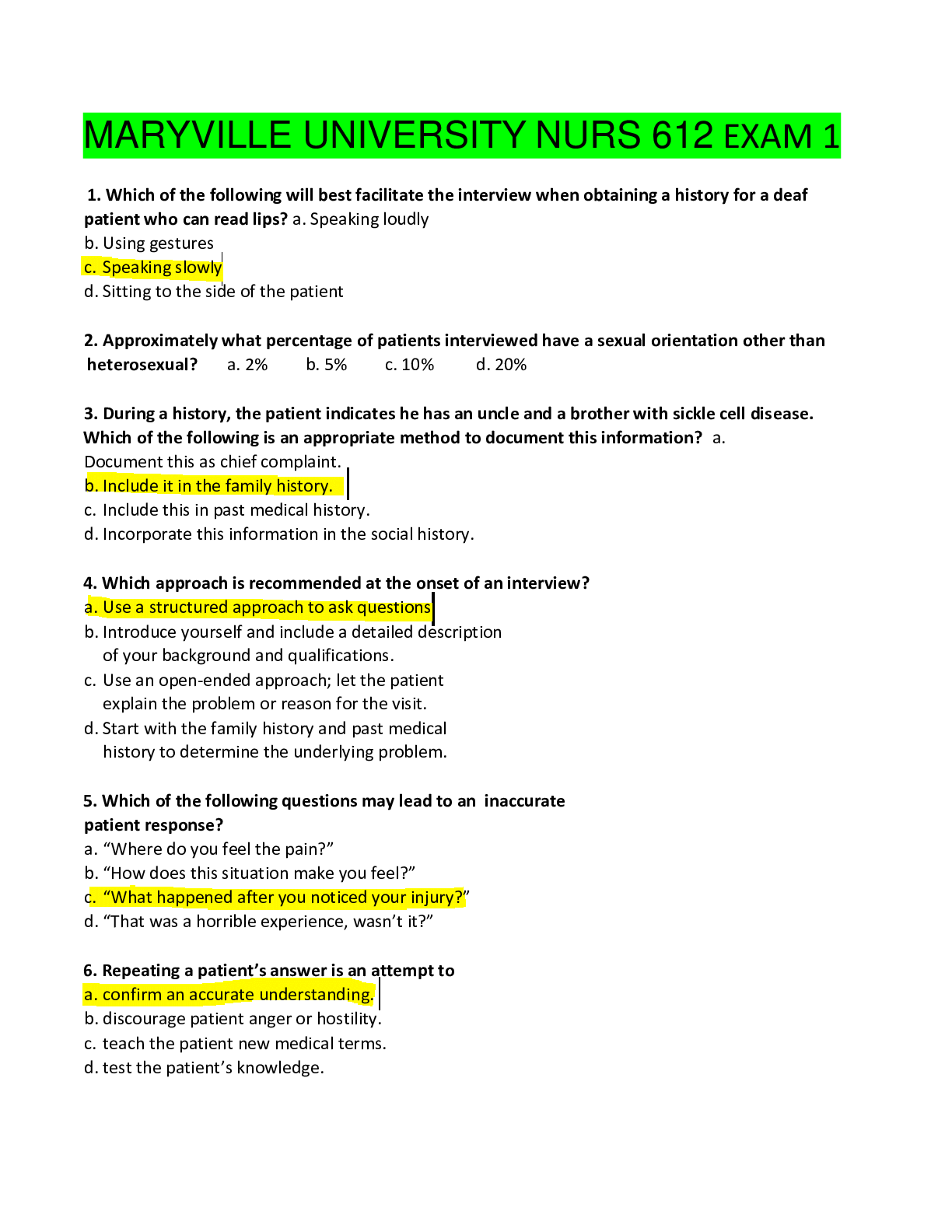
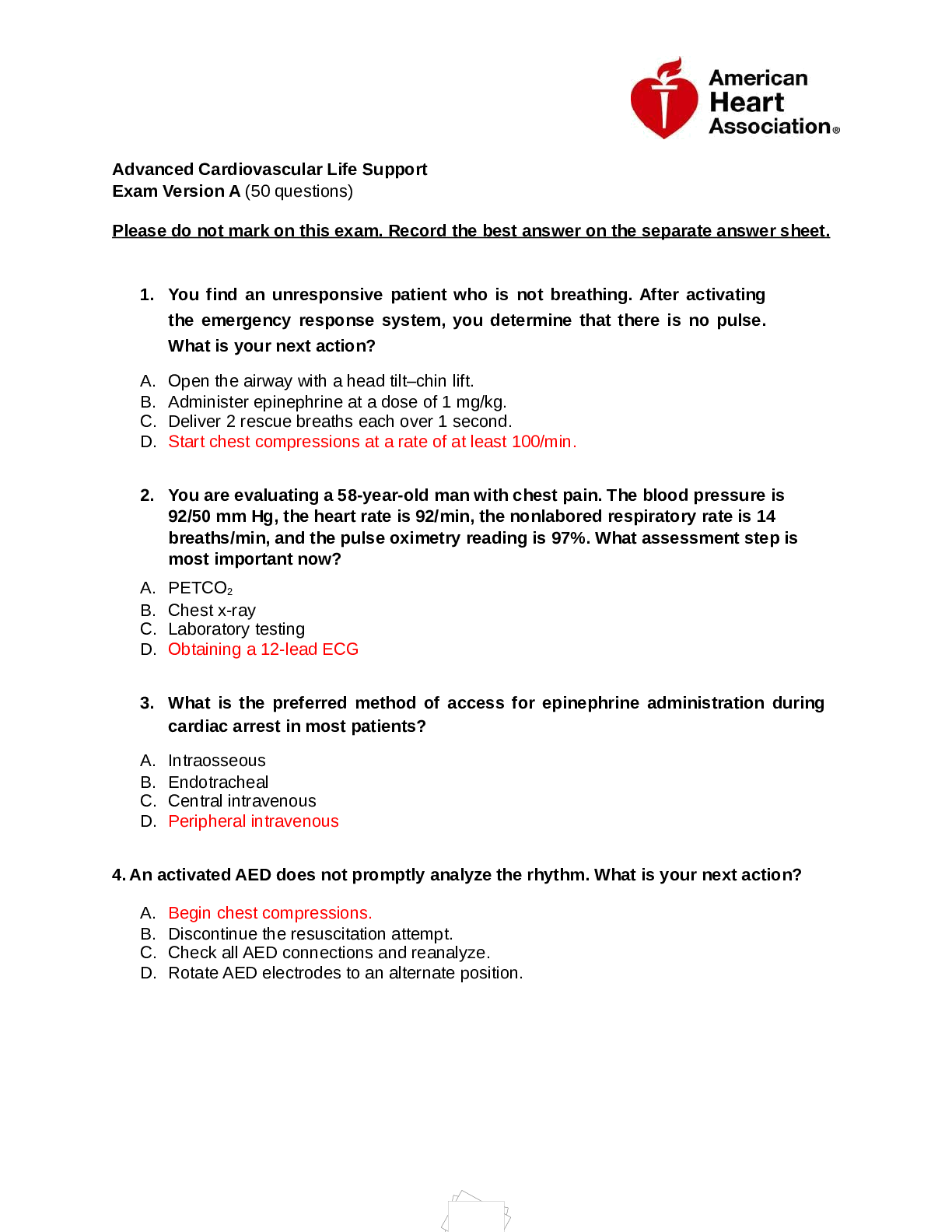

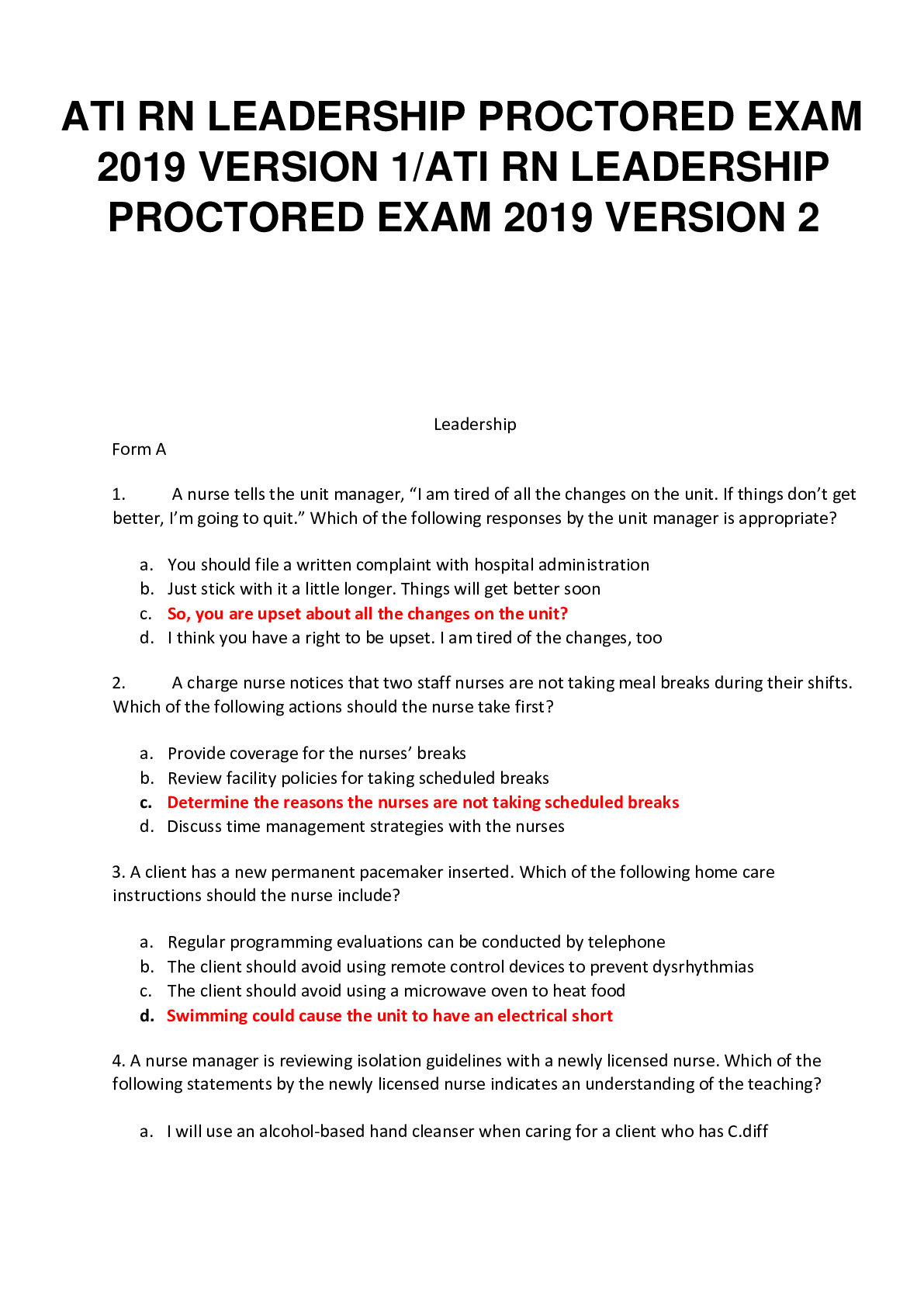
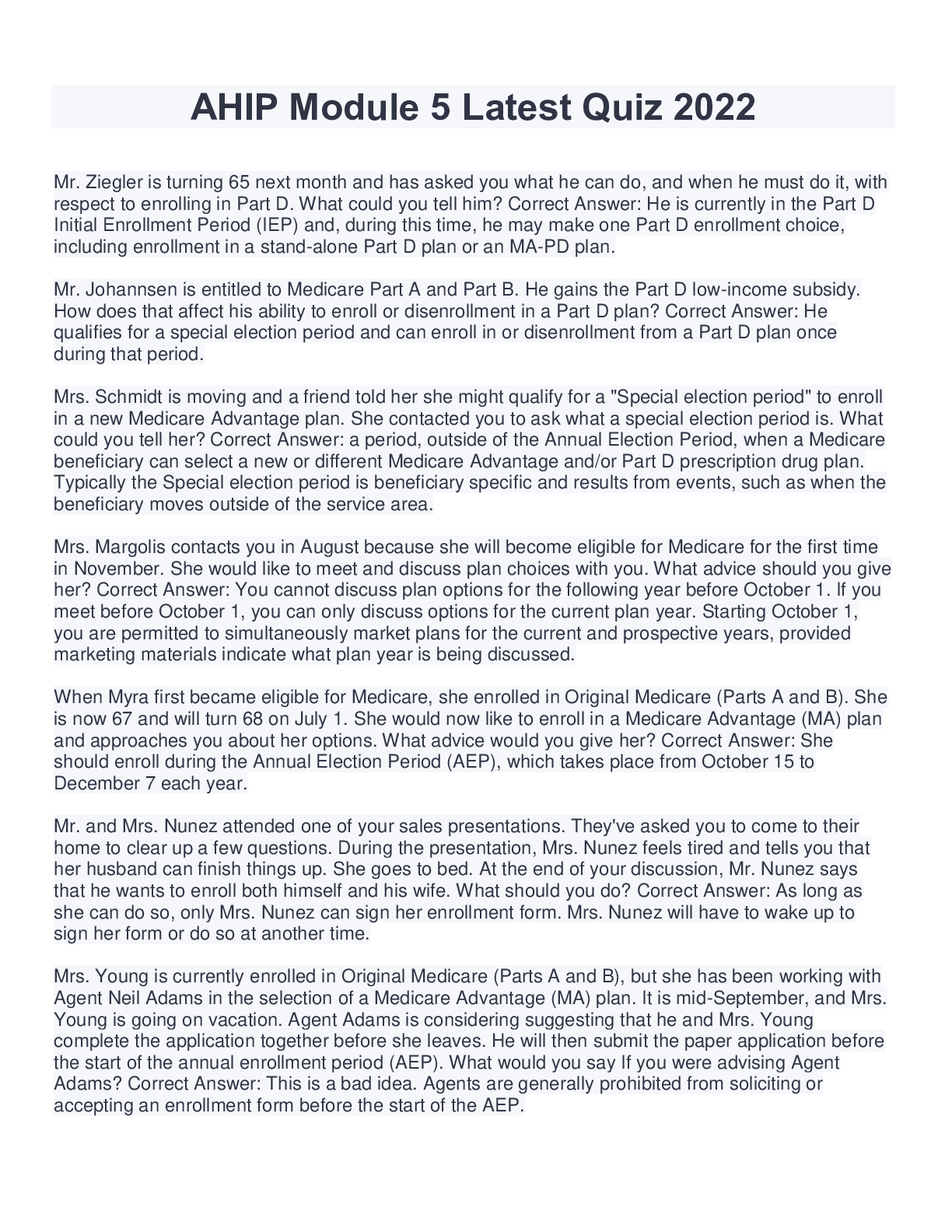
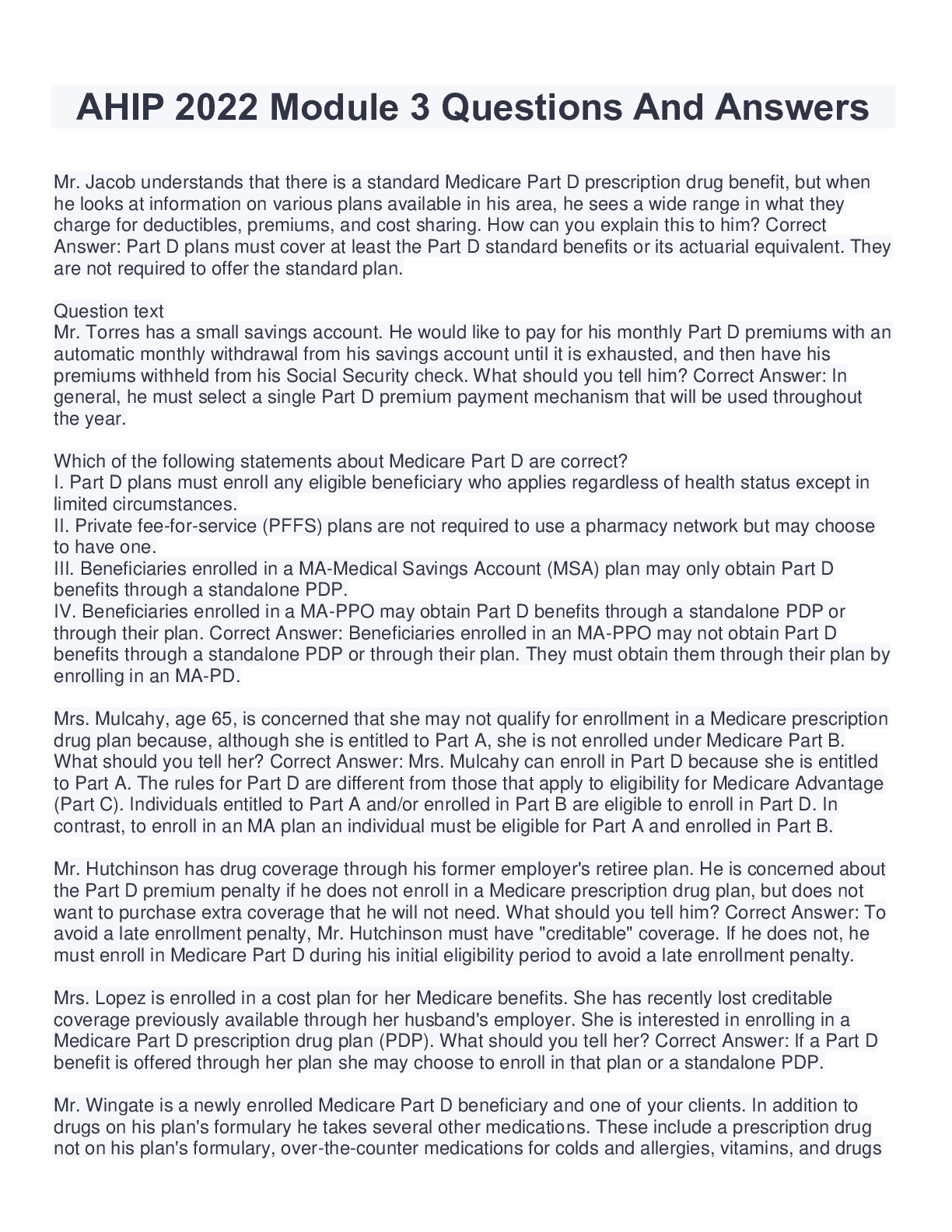
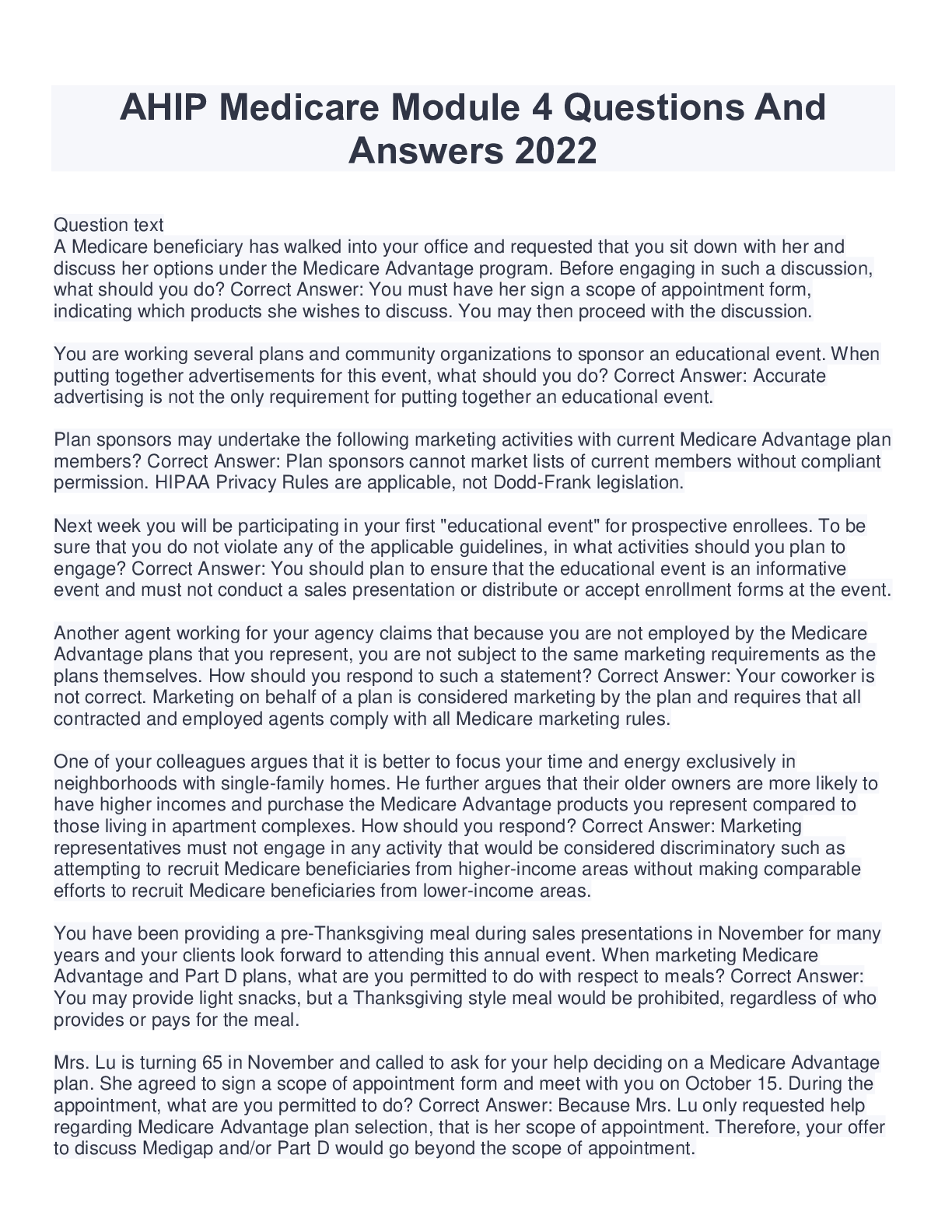
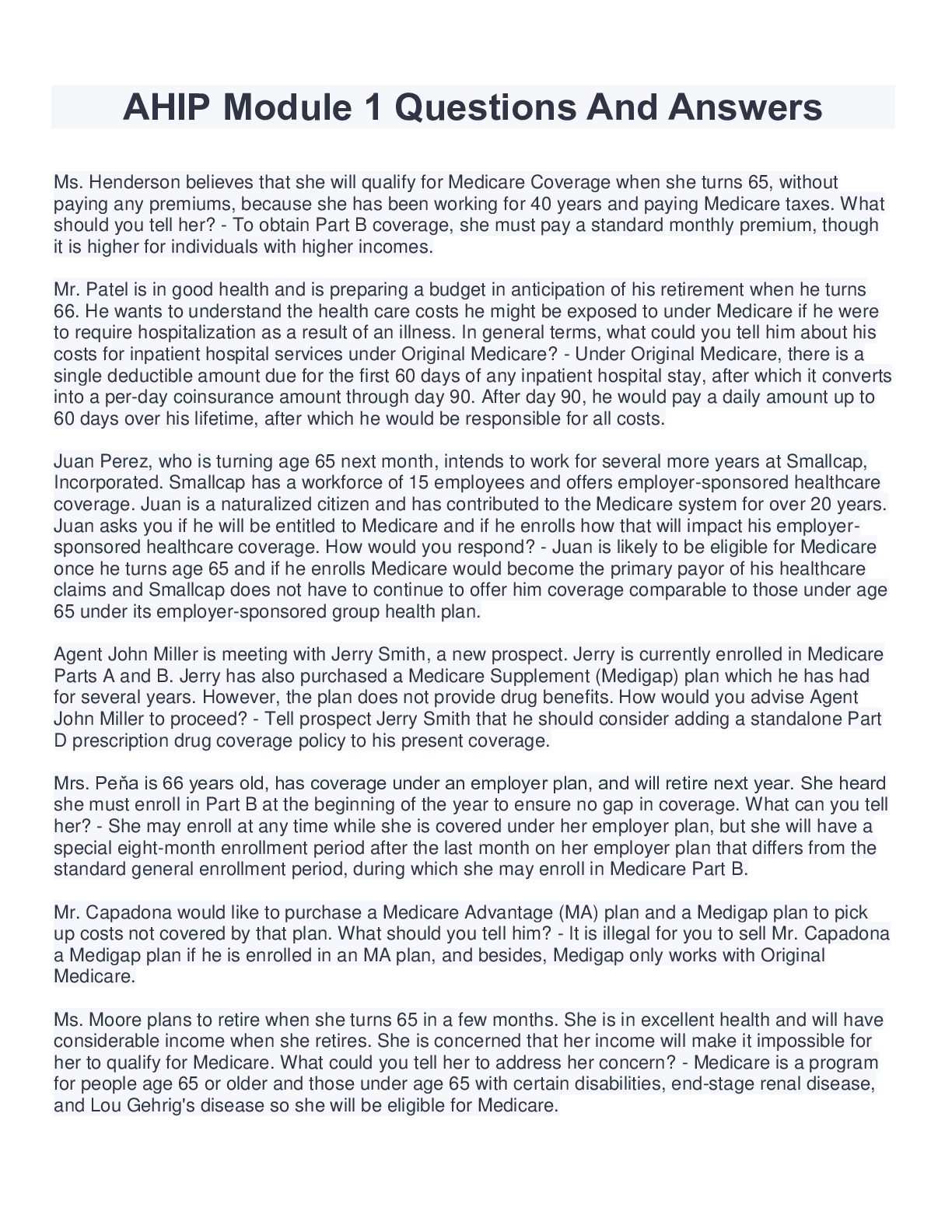
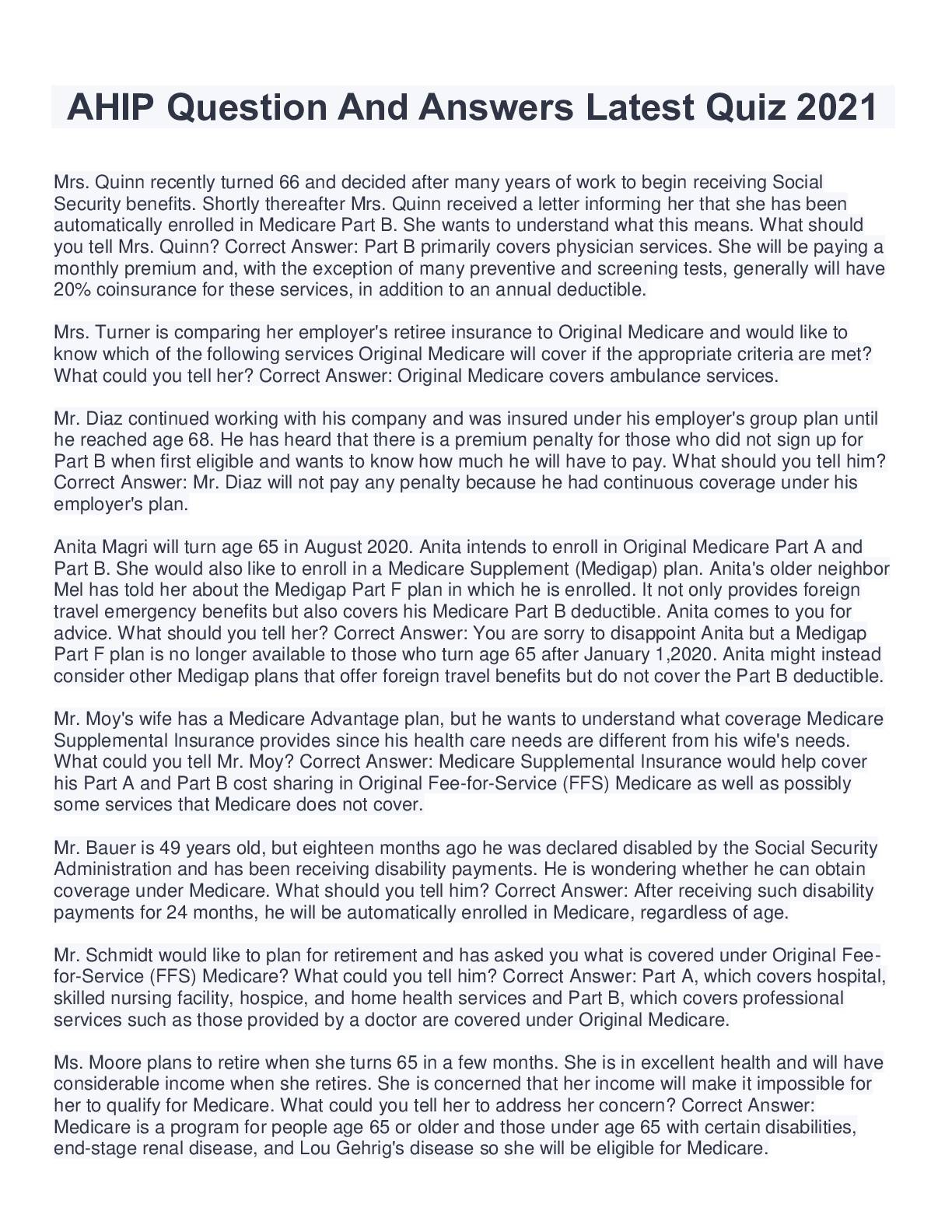
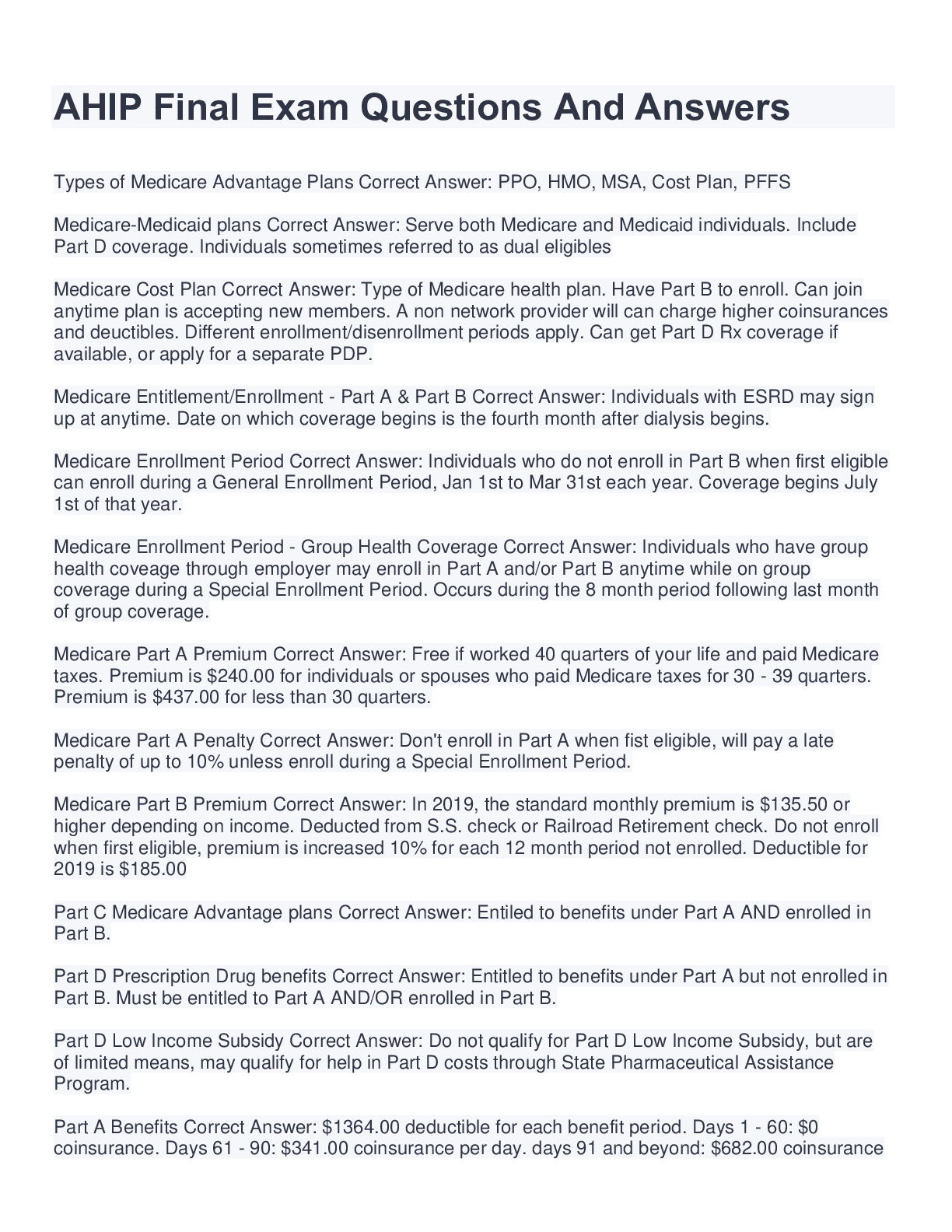
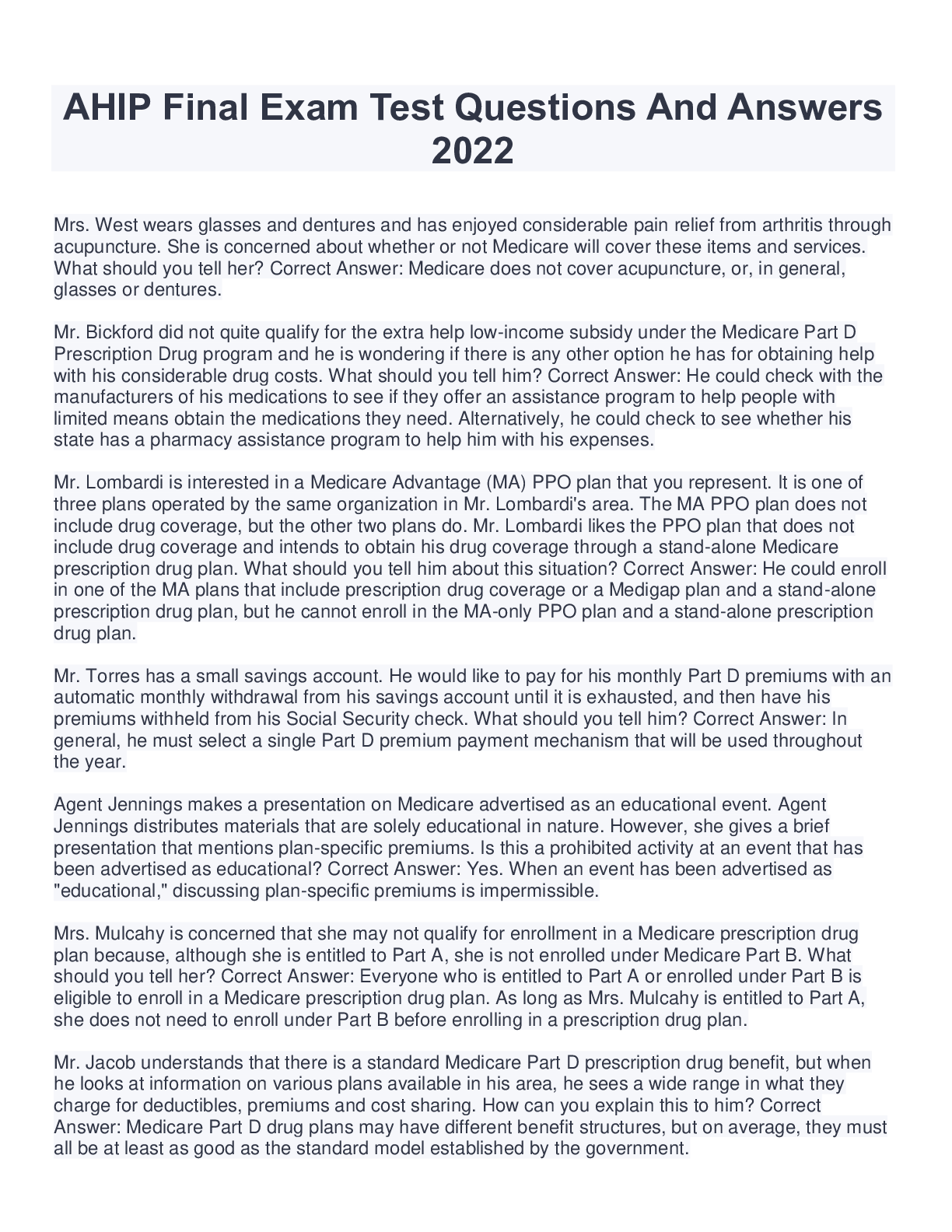
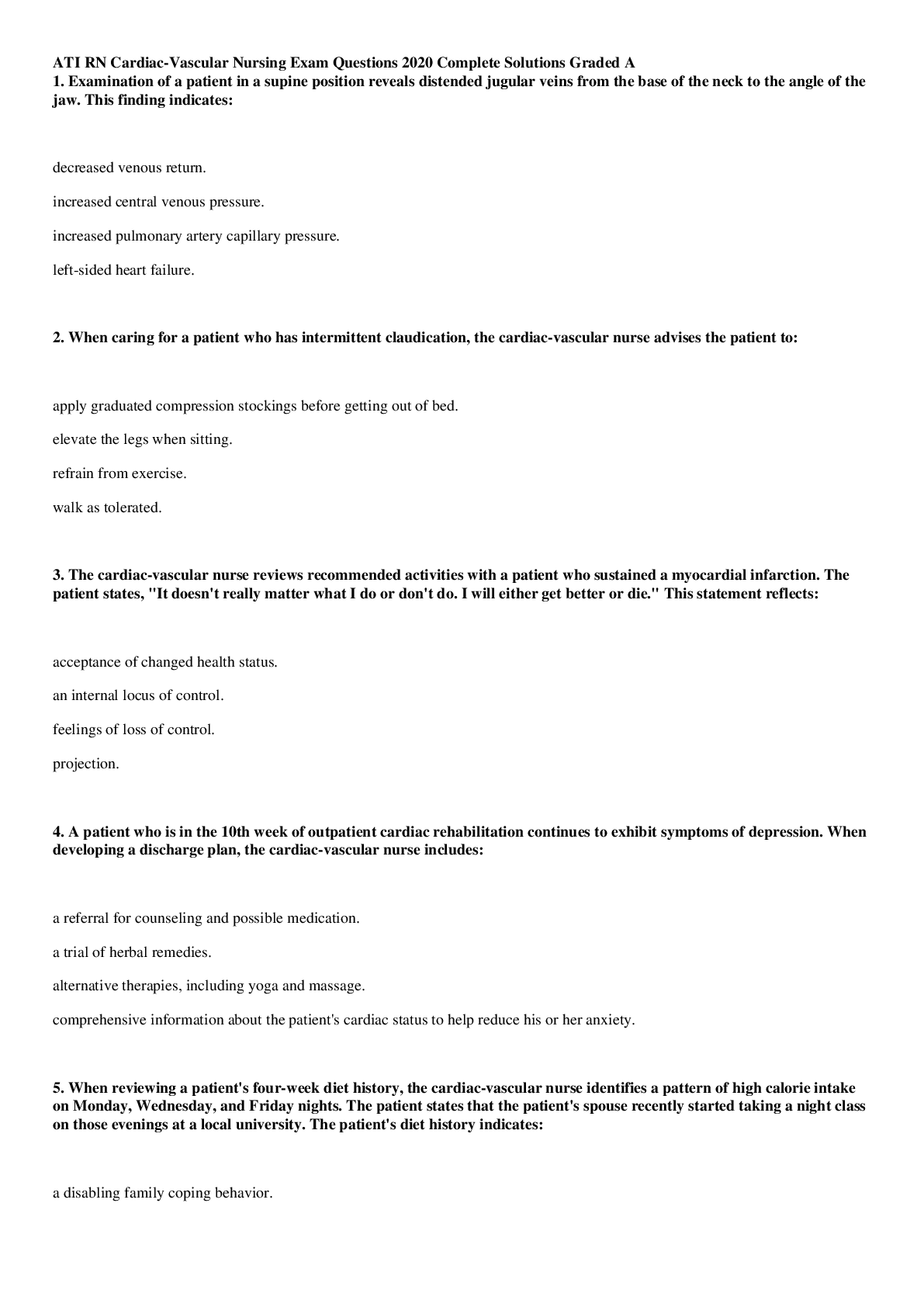
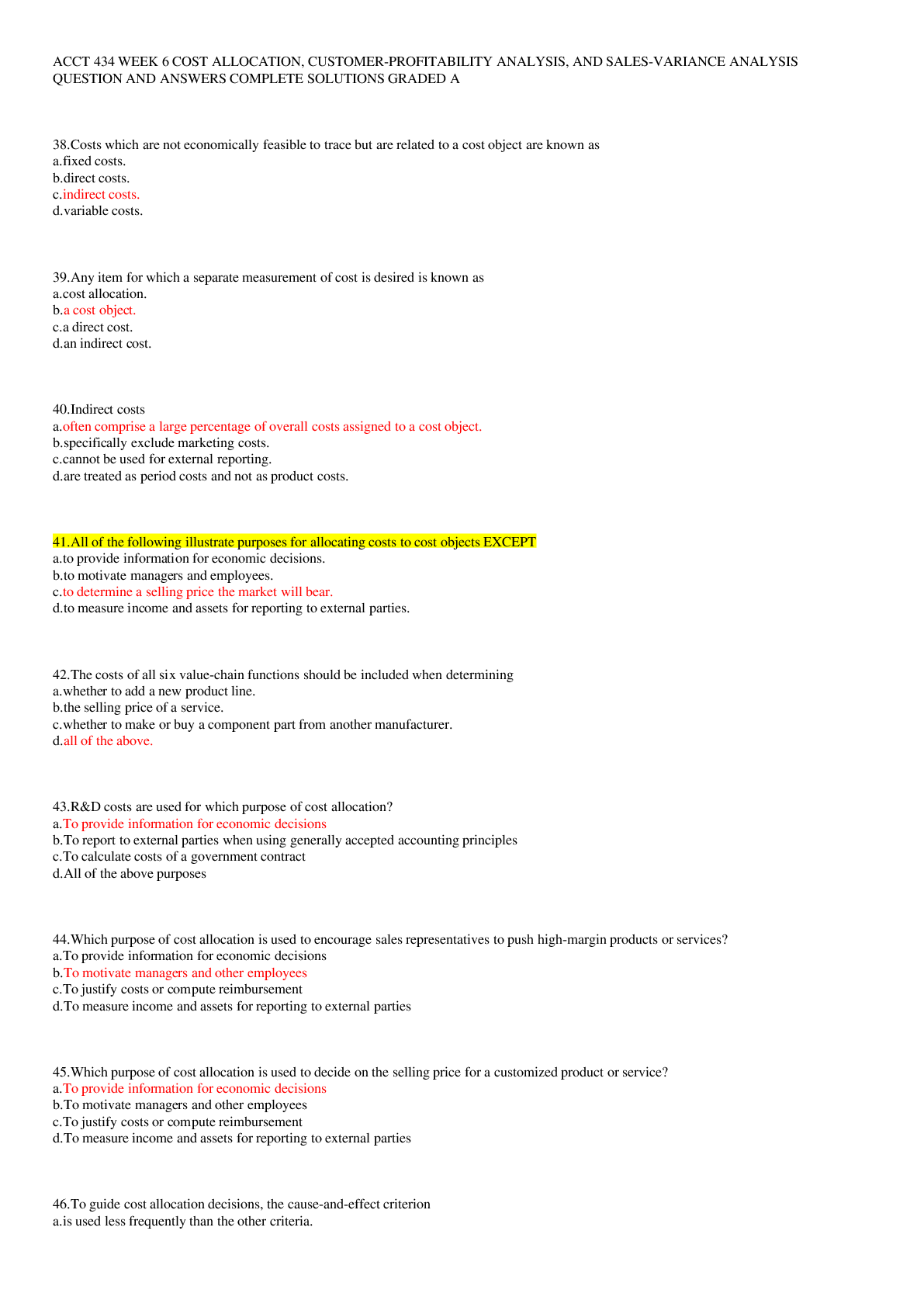

 (2).png)
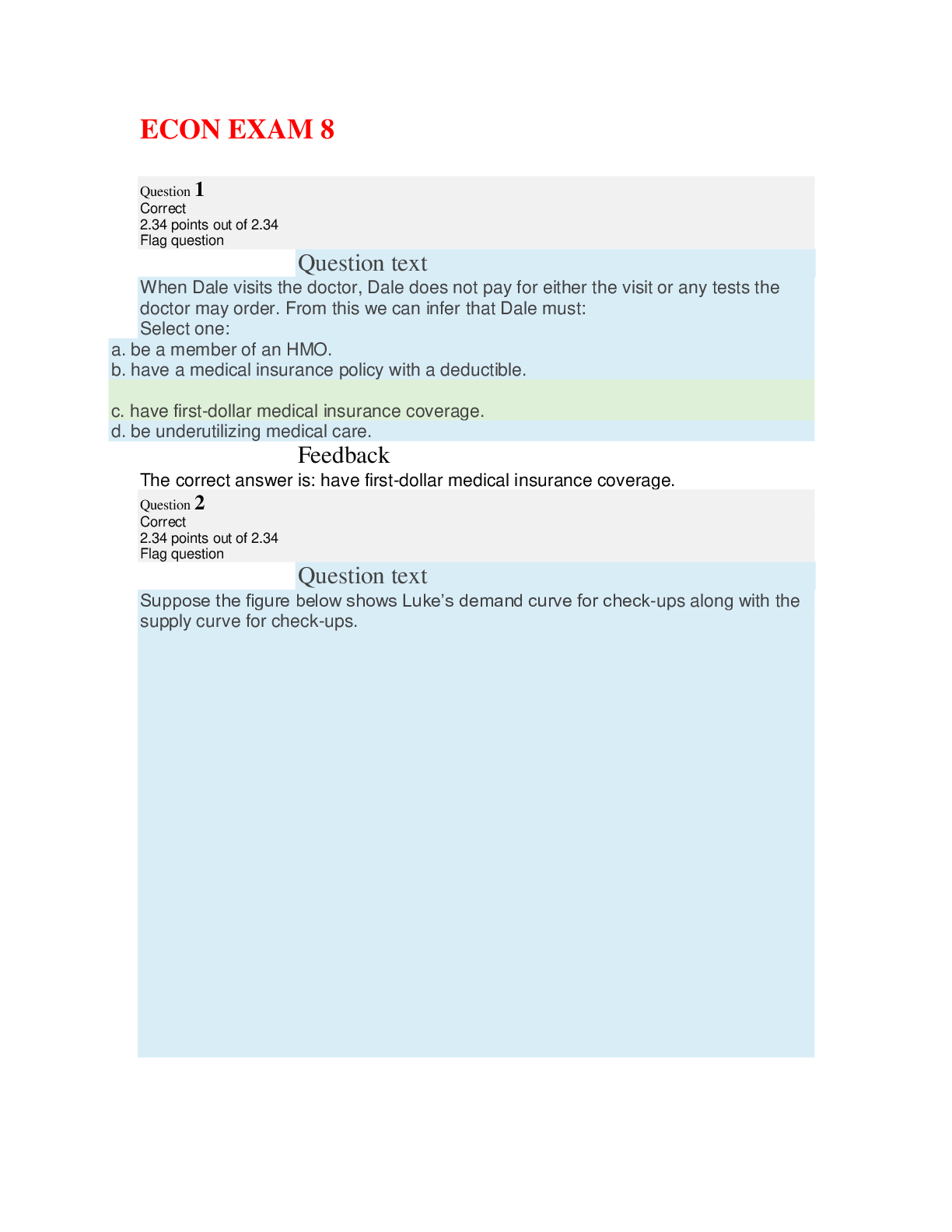
 Quality and Safety through Evidence Based Practice Complete Solutions Graded A+.png)
 Complete Solutions Graded A.png)
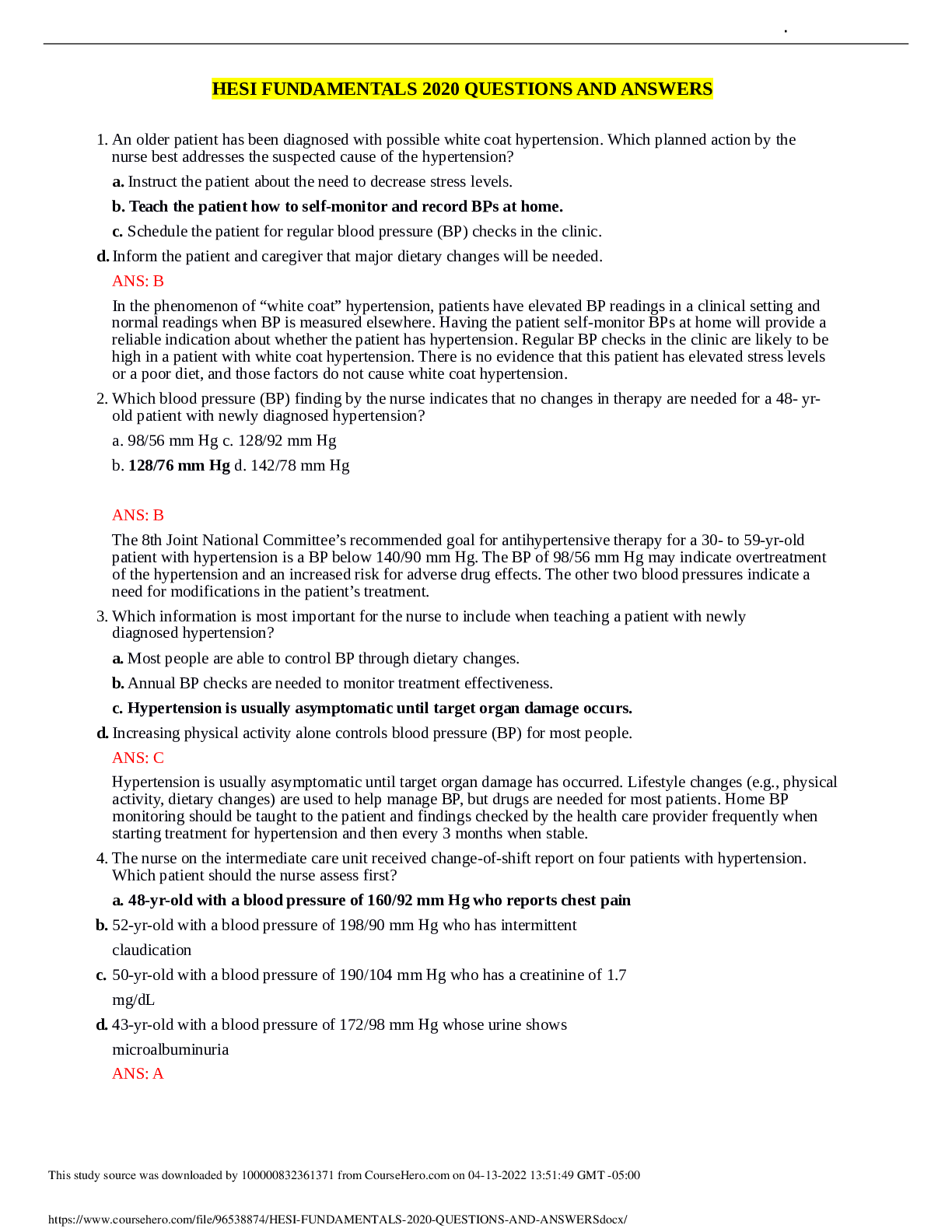
 LATEST VERIFIED COMPLETE SOLUTIONS.png)
